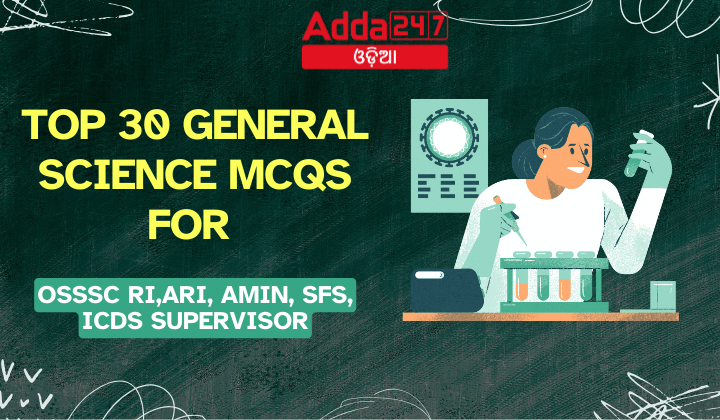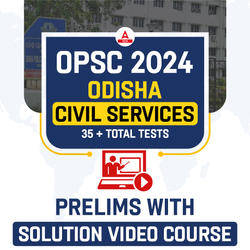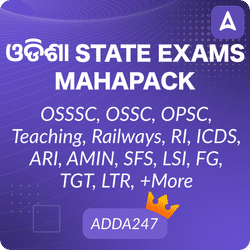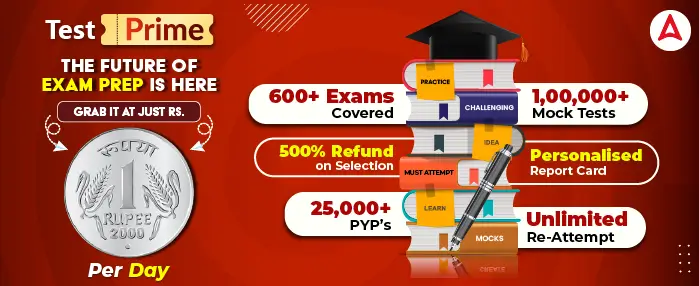General Science forms an essential part of many competitive exams in India, including those conducted by the Odisha Sub-ordinate Staff Selection Commission (OSSSC) for various positions like Revenue Inspector (RI), Assistant Revenue Inspector (ARI), Amin, SFS, and ICDS Supervisor. To excel in these exams, candidates must have a strong grasp of fundamental scientific concepts. Here, we present the top 30 General Science multiple-choice questions (MCQs) to help candidates prepare effectively.
Top 30 General Science MCQS For OSSSC RI,ARI, Amin, SFS, ICDS Supervisor
- Noise is measured in which unit?
(a) Watt
(b) Faraday
(c) Pascal
(d) Decibel
Answer: (d) Decibel - The SI unit of electric charge is?
(a) Volt
(b) Ohm
(c) Coulomb
(d) Watt
Answer: (c) Coulomb - For what is Mohs scale used?
(a) To measure brightness of a substance
(b) To measure viscosity of a liquid
(c) To measure elasticity of a material
(d) To measure hardness of minerals
Answer: (d) To measure hardness of minerals - An anemometer measures which of the following?
(a) Speed of light
(b) Speed of wind
(c) Speed of water current
(d) Speed of satellites
Answer: (b) Speed of wind - Humidity of air is measured by?
(a) Hygrometer
(b) Nanometer
(c) Glucometer
(d) Barometer
Answer: (a) Hygrometer - The mass of an object?
(a) changes from place to place
(b) remains same everywhere
(c) is equal to its weight
(d) is greater at mountains
Answer: (b) remains same everywhere - Newton’s first law is also known as?
(a) Law of friction
(b) Law of moments
(c) Law of Inertia
(d) Law of motion
Answer: (c) Law of Inertia - Rocket propulsion technology works on which of the following scientific principles?
(a) Laws of reflection of sound
(b) Newton’s law of motion
(c) Law of thermodynamics
(d) Law of conservation of mass
Answer: (b) Newton’s law of motion - If a ball is thrown up, which of the following does not change?
(a) Acceleration
(b) Speed
(c) Potential energy
(d) Distance
Answer: (a) Acceleration - Acceleration is?
(a) Inversely proportional to force
(b) Inversely proportional to mass
(c) Directly proportional to mass
(d) Directly proportional to force
Answer: (b) Inversely proportional to mass - Who among the following coined the term ‘cell’?
(a) Theodor Schwann
(b) Robert Hooke
(c) Oswald Avery
(d) Gerhard Domagk
Answer: (b) - The suicidal bags of the cell are:
(a) Lysosomes
(b) Ribosomes
(c) Dictyosomes
(d) Phagosomes
Answer: (a) - In which part of the cell are proteins made?
(a) Reticulum
(b) Golgi apparatus
(c) Ribosomes
(d) Lysosome
Answer: (c) - Name the scientist who proposed the cell theory.
(a) Schleiden and Schwann
(b) Lamarck
(c) Treviranus
(d) Whittaker and Stanley
Answer: (a) - Which cell organelle is also called the ‘power house of a cell’?
(a) Lysosome
(b) Mitochondria
(c) Golgi Apparatus
(d) Plastids
Answer: (b) - The cell wall of a plant is composed of:
(a) Lipoprotein
(b) Carbohydrates
(c) Cellulose
(d) Lipids
Answer: (c) - What is contained in Chlorophyll?
(a) Sodium
(b) Potassium
(c) Manganese
(d) Magnesium
Answer: (d) - Which part of a plant cell traps sunlight to make sugar?
(a) Chloroplast
(b) Leucoplast
(c) Chromoplast
(d) Starch grain
Answer: (a) - Which of the following is not connective tissue?
(a) Bone
(b) Cartilage
(c) Blood
(d) Skeletal muscle
Answer: (d) - Skeletal muscles are attached to the skeleton by tough connective tissues called ……………
(a) Cartilage
(b) Neurons
(c) Ligament
(d) Tendons
Answer: (d) - People living in high altitudes (like mountains) usually have a _________?
(a) smaller number of Red Blood Cells
(b) larger number of Red Blood Cells
(c) smaller number of White Blood Cells
(d) larger number of White Blood Cells
Ans. (b) larger number of Red Blood Cells - The blue colour of clear sky is due to_______________?
(a) Reflection of light
(b) Refraction of light
(c) Diffraction of light
(d) Dispersion of light
Ans. (d) Dispersion of light - A device that converts mechanical energy into electric energy is called_______?
(a) Motor
(b) Transformer
(c) Coil
(d) Generator
Ans. (d) Generator - _________ is anything that takes up space and has mass.
(a) Matter
(b) Gravity
(c) Energy
(d) Plasma
Ans. (a) Matter - All matter is made of ___________?
(a) Air
(b) Water
(c) Vibrations
(d) Atoms
Ans. (d) Atoms - What are considered the building blocks of matter?
(a) Molecules
(b) Protons
(c) Elements
(d) Atoms
Ans. (d) Atoms - What are the three subatomic particles of an atom?
(a) Protons, Neutrons & Electrons
(b) Protons, Nucleus & Electrons
(c) Protons, Nucleus & Elements
(d) Elements, Nucleus & Protons
Ans. (a) Protons, Neutrons & Electrons - The protons and neutrons are found in the center of the atom, which is called the _________of the atom?
(a) Nucleus
(b) Headquarters
(c) Hub
(d) None of These
Ans. (a) Nucleus - _____________ are positively (+) charged particles?
(a) Neutrons
(b) Electrons
(c) Protons
(d) None of These
Ans. (c) Protons - ___________ are negatively (-) charged particles of an atom?
(a) Protons
(b) Neutrons
(c) Electrons
(d) None of These
Ans. (c) Electrons

